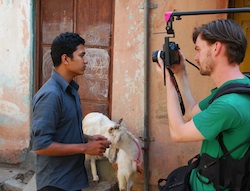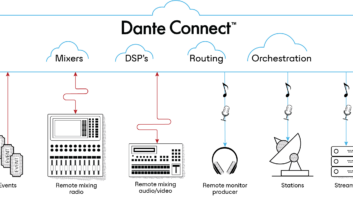
Experimental feature film Dark Fibre which is believed to be the first entirely shot on the Canon EOS 5D is being premiered online next month, writes Adrian Pennington.
The £80,000 90-minute project mixes fiction with documentary style shooting and was shot on location in Bangalore at the beginning of 2009. It will be released in a series of episodes on online content network Babelgum in November.
Director, co-writer and cinematographer Peter Mann used two Canon EOS 5D SLRs and a range of Nikon AIS manual lenses to override the Canon’s autofocus, a Merlin Steadicam and Easyrig Turtle camera support backpack. Mann shot the film with co-editor Vandana Menon and producer, Jamie King.
“We considered using Sony EX3s but just as we were making our decision the 5D came onto the market,” said Mann. “The picture quality, especially in low light, and depth of field were phenomenal and although we had no idea technically what problems we might come across attempting a shoot on this scale – because no-one had tried it before – we took the plunge.
“We were also shooting in uncontrolled sets for a lot of the time so it was important that it looked as if we were shooting stills because larger cameras would have made people more nervous,” he added.
Rushes were recorded to 16GB flash cards, recording about an hour of H.264 files per card, and downloaded and transcoded into DVCPRO to a laptop loaded with Final Cut, each day. A back up drive with the master H.264 files was saved to a RAID device.
Sound was recorded to an Edirol solid-state recorder with slate boards and post synchronization. Finishing and grade, in Baselight, was performed at Soho’s Splice TV.
Dark Fibre is a portrayal of a young ‘Cablewallah’, a term used to describe the workers who install and maintain the labyrinth-like local cable TV networks of Bangalore.
“We made the film in a crossover documentary/fiction style, with the lead actor embedded in real-life situations and the semi-scripted dialogue and events making up the action of the film,” says Mann.
King previously made the documentary Steal This Film which reached 6 million people online.







